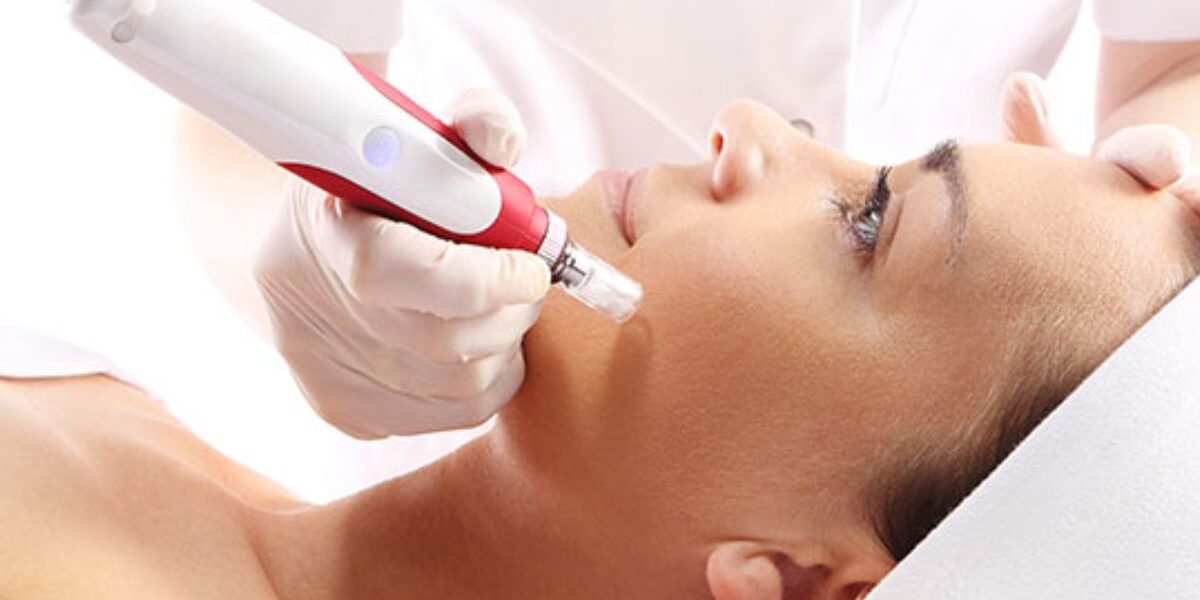Microneedling, also known as collagen induction therapy, has gained immense popularity in recent years as a non-invasive treatment for skin rejuvenation. This technique involves the use of fine needles to create tiny punctures in the skin, stimulating the body’s natural healing process and collagen production. But what exactly is the science behind microneedling, and how does it lead to healthier, more youthful-looking skin? In this blog, we will delve into the mechanisms that make microneedling a powerful skin-rejuvenating treatment, how it works, and why it’s becoming a go-to procedure in the world of aesthetics and skincare.
Understanding the Skin’s Structure
To truly grasp the benefits of microneedling, it’s important to understand the structure of our skin The skin consists of three primary layers: the epidermis, dermis, and subcutaneous tissue.
- Epidermis: The outermost layer that acts as a barrier against environmental factors.
- Dermis: The middle layer where the skin’s structural integrity is maintained. It contains collagen, elastin fibers, and blood vessels.
- Subcutaneous Tissue: The deepest layer that helps insulate the body and absorb shocks.
Collagen, a protein found in the dermis, plays a critical role in maintaining the skin’s firmness, elasticity, and smoothness. Over time, collagen production decreases due to factors such as aging, sun exposure, and lifestyle choices. This results in sagging skin, wrinkles, and the appearance of fine lines. Microneedling works by stimulating collagen production, leading to smoother and more youthful skin.
How Microneedling Works: The Mechanism
Microneedling involves the use of a device equipped with fine needles that create tiny micro-injuries on the skin’s surface. These injuries are not deep enough to cause significant damage but are sufficient to trigger the skin’s natural repair mechanism. Here’s how the process works:
- Stimulation of Collagen Production: The micro-injuries caused by the needles signal the body to start the wound-healing process. As a result, fibroblast cells in the dermis are activated, and collagen and elastin production is stimulated. This leads to firmer, smoother skin.
- Increased Blood Flow: The tiny punctures also stimulate blood flow to the treated area, improving the delivery of nutrients and oxygen. This increased circulation aids in the skin’s healing process, resulting in a glowing, healthier complexion.
- Improved Product Absorption: Microneedling can also enhance the absorption of skincare products. The micro-channels created by the needles allow active ingredients in serums and creams to penetrate deeper into the skin, making them more effective.
Microneedling for Various Skin Concerns
Microneedling is a multifaceted treatment that can target various skin issues, such as:
- Fine Lines and Wrinkles: Microneedling stimulates collagen production, which helps to reduce the appearance of fine lines and wrinkles, giving the skin a smoother and more youthful appearance.
- Acne Scars: Microneedling has been proven to be effective in treating acne scars by breaking down scar tissue and encouraging the formation of new, healthy skin cells.
- Hyperpigmentation: The treatment can help reduce dark spots and uneven skin tone by promoting the regeneration of skin cells and improving skin texture.
- Stretch Marks: Microneedling can be used to reduce the appearance of stretch marks by stimulating collagen production in the affected areas.
- Enlarged Pores: The treatment helps to tighten the skin and reduce the appearance of enlarged pores by promoting collagen and elastin production.
Benefits of Microneedling
- Non-Invasive: Microneedling is a minimally invasive procedure with little to no downtime, making it a popular choice for those looking for a quick, effective treatment.
- Safe for All Skin Types: Unlike some other aesthetic treatments, microneedling is suitable for all skin types and tones.
- Minimal Discomfort: The procedure is generally well-tolerated, with most patients reporting only mild discomfort during the treatment.
- Sustained Results: After several sessions, microneedling can deliver results that last over time. Collagen production continues to improve over time, leading to gradual and natural-looking skin rejuvenation.
IICAD Academy and Microneedling Training
The International Institute of Cosmetology, Aesthetics and Dentistry (IICAD) in Bangalore is one of the leading institutions for cosmetology, aesthetics, and dentistry training. IICAD Academy offers comprehensive training in microneedling and other advanced skincare treatments. Aspiring professionals can learn the science behind microneedling and gain hands-on experience in providing this treatment to clients.
As the best cosmetology, aesthetics, and dentistry institute in Bangalore, IICAD Academy equips students with the knowledge and practical skills needed to perform microneedling procedures safely and effectively. With expert instructors and state-of-the-art facilities, IICAD is the ideal place for those looking to build a career in the field of aesthetics.
Summary:
Microneedling is a minimally invasive skin rejuvenation procedure that works by stimulating collagen production through tiny micro-injuries. This results in smoother, firmer skin and can address issues like fine lines, acne scars, and hyperpigmentation. The International Institute of Cosmetology, Aesthetics and Dentistry (IICAD) in Bangalore is the best cosmetology, aesthetics, and dentistry institute in Bangalore, offering specialized courses in microneedling and other advanced skincare treatments. Aspiring professionals can gain the knowledge and practical skills needed for a successful career in this growing field at IICAD Academy.

